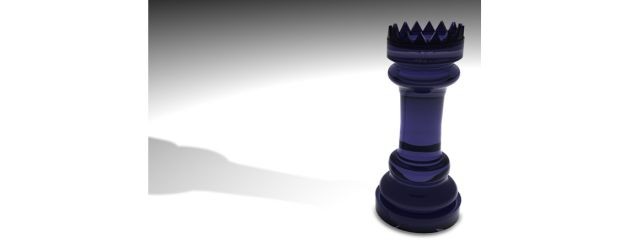Recommended Poker Room
Are you wondering what the best heads-up strategy in Sit and Go’s is? Are you wondering why some of the strong players push all-in that often in a SNG when only you and your opponent are left? Well, the heads-up part of SNG is “mathematically solved”. You basically have just the choice between folding or going all-in. But most of the players still don’t know about this optimal strategy. Continue reading to gain a strong advantage for yourself the next time you reach the heads-up phase in a SNG.
Features of Heads-Up Phase in a SNG
The blinds are very large in relation to the stacks. The best strategy is to go pre-flop all-in or fold.
You only play for 20% of the prize money. The remaining two players only play for the victory. They will for sure get the prize money for becoming second in the SNG. In a standard $10 SNG with a prize money distribution of $20 for 3rd place, $30 for 2nd place and $50 for 1st place, both players in heads-up have already won $30 for sure. Therefore, you only play for the difference in prize money between second and first place: $20.
The basic strategy from the Independent Chip Model (ICM), stating that the value of chips gained is lower than the value of chips lost, is not relevant anymore. The ratio between the number of chips and the theoretical claim in price money is now linear as in cash games. A player doubling his stack in the heads-up phase of a tournament also doubles the likelihood of winning the tournament. If in a $10 SNG Player A has 75% of the chips and Player B has 25% of the chips, then the EV (expected value) of the chips from player A is 75% x $50 + 25% x $30 = $45 and the chips from player B have a theoretical value of $35.
In particular, the first point is important: The blinds are so high that the heads-up SNG strategy is relatively simple. It is more or less solved mathematically. The two writers and poker players, James Kittocks and Lee Jones have done this analysis. In 2005, they developed the simple “Sit and Go Endgame System”, short SAGE ™. If you want to go into more detail, we recommend you to read their publication, which can be found here on the website of the poker magazine Card Player.
Best Heads-Up Strategy Sit and Go’s
We will explain you the mathematically correct heads-up strategy. If you apply this strategy, even the world champion in heads-up poker will have no advantage against you. If you both have 50% of the chips in heads-up, you will have both a 50% chance of winning the tournament.
This best strategy is an equilibrium strategy: no player may alter it without being worse off. If a player in the heads-up of a SNG does not apply it, he will lose money in the long term. This also means that if both players have the same amount of chips and if they both use the SAGE strategy, the will both have a 50% chance of winning the tournament. Skill and experience are no longer relevant. If both players play heads up with this optimal strategy, then the skill game No Limit Texas Hold’em Poker becomes a pure game of chance.
Before we explain you how this simple, best strategy for the heads-up phase of a Sit’n Go works, please note these limitations:
SAGE™ works only in heads-up games. If three or more players are left then the system will not work because the chips in the individual stacks of the opponents have a different value. 3handed, the single chip left for a player in a $10 SnG is worth $20, while the chips of the big stack, even if he has 14’900 out of 15’000 chips, can never have a value of more than $50 (the prize money for becoming first). So if 3 or more players are left and if more than one place is awarded with prize money, the much more complex ICM model has to be used.
SAGE ™ only works with high blinds. The effective stack size must not exceed 7 big blinds after posting the blinds. If the effective stacks are higher, then the SAGE strategy will not work optimally anymore. The effective stack size is calculated as follows:
number of chips of the small stack after posting the blinds divided by size of the big blind
Example: The blinds are 400/800 and after posting the blinds the big stack is left with 9,600 chips and the small stack has 4,200 chips left. The player with fewer chips thus holds 4,200 / 800 = 5.25 big blinds. So the effective stack size is a little bit more than 5 BB. In this situation, you can use the system. It does not matter how many chips the big stack has, only the number of chips of the smaller stack is relevant.
SAGE ™ will only work with push or fold. The system works only if the small blind either goes all-in or folds. When the small blind just completes (limps) or if he makes a mini-raise, this strategy will not work.
Using the Best Sit and Go Heads-Up Strategy
The application of this perfect and thus unbeatable strategy is simple. You first need to calculate the value of your two cards, the so-called “power index” (PI). Then you can look at the simple “all-in or fold” chart and decide whether you should move all-in or if you should fold.
Step 1: Calculation of Power Index
- The cards have their face value, ie 5 = 5 points, 8 = 8 points, Ten = 10 points. The face cards have a value of Jack = 11 points, Queen = 12 points, King = 13 points, Ace = 15 points (!)
- Double the value of the higher card
- Add up the value of the lower card
- If you have a pair, then add 22
- If the cards are suited, then add 2
- The sum is the Power Index
Step 2: Comparing value in the chart and decision
- Calculate how many big blinds the short stack has after posting the blinds
- Read from the following chart what the required Power Index is. If your calculated value in step 1 is equal to or greater, then you should push all-in (as the Small Blind) respectively you can call an all-in call (as Big Blind)
| Number of BB | Push SB | Call BB |
| 1 | 17 | (always) |
| 2 | 21 | 17 |
| 3 | 22 | 24 |
| 4 | 23 | 26 |
| 5 | 24 | 28 |
| 6 | 25 | 29 |
| 7 | 26 | 30 |
Examples of the Heads-Up SNG Strategy
At first glance, this strategy may look a bit complicated, but it is very simple. Just have a look at these examples:
SNG Heads-Up Strategy Example 1
Blinds 400/800. After posting the blinds, the SB has 4,000 chips and he holds Kd 3s. The BB has 4,800 chips and holds 4s 4h.
The Power Index of the Small Blind is (2 x 13) + 3 = 29. The power index of the Big Blind is (2 x 4) + 4 + 22 (for a pair) = 34
The short stack has 4,000: 800 = 5 big blinds.
According to the above table, the Small Blinds must have a Power Index of at least 24 in order to be able to push all-in. Because he has a PI of 29, he has to push all-in.
The BB needs a PI of 28. His current PI is 34. So he has to call the all-in.
SNG Heads-Up Strategy Example 2
Blinds 300/600. After posting the blinds, the SB has 2,500 chips left and holds 9c 6c as hole cards. The BB has 6,600 chips and his hole cards are 6h 3d.
The Power Index is the SB is (2 x 9) + 6 + 2 (for suited cards) = 26. The power index of the BB is (2 x 6) + 3 = 15
The short stack has 2,500: 600 = slightly more than 4 big blinds.
According to the above table, the SB needs at least a Power Index of 23 in order to be able to push all-in. Because his PI is 26, he has to push all-in.
The BB needs a PI of 26 to call this all in. Because his PI is 15, he has to fold.
SNG Heads-Up Strategy Example 3
Blinds 200/400. After posting the blinds, the SB is left with 7,200 chips and his hole cards are Qh 5h. The BB has 2,600 chips and holds Ad 2c.
The Power Index of the SB is (2 x 12) + 5 + 2 = 31. The power index of the BB is (2 x 15) + 2 = 32
The short stack has 2,600: 400 = just over 6 big blinds.
According to the above table, the SB needs at least a Power Index of 25 in order to be able to push all-in. Because he has a PI of 31, he has to push all-in.
The BB needs a PI of 29. His PI is 32. So he has to call the all-in.
Summary Perfect HU SNG Strategy
With this heads-up strategy – if applied by both players – the fight for the first place in a tournament can be reduced to a game of chance, if both players use this strategy and if they both have the same number of chips. If a player plays according to this strategy, then his opponent has to use this strategy as well, otherwise he will lose money in the long term.
But what if your opponent does not use this mathematically optimal strategy? Then he loses money in the long term if you play according to this strategy. However, you can earn even more money if you adapt your strategy to your opponent. Especially in low limit Sit’n Go tournament, opponents usually play too tight when the blinds are high. They rarely go all-in, and they fold too often to all-in bets. This means that these opponents play only with the top starting hands. Accordingly, you should rarely call all-ins against such opponents (the cards of the opponent will be very strong). And because weak players fold too often, you can push even more often than allowed by the strategy from the above chart, because you can successfully steal the blinds so often.
Tip for Sit and Go Players
Although this strategy was published in 2005, it is only used by relatively few regulars. A poker room where there are virtually no regulars and where you can destroy your opponents using this simple heads-up SNG strategy, is LuckyAce Poker. This poker room is very fishy thanks to many weak players who usually play casino games like roulette. Try it out now and get a VIP bonus of $400 with the bonus code sngpoker with your first deposit. A quarter of the bonus will be credited to you directly after your deposit!


 www.
www.